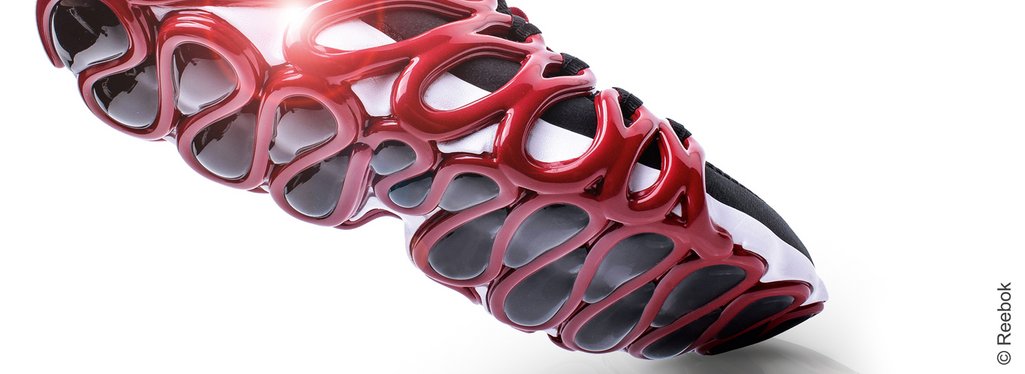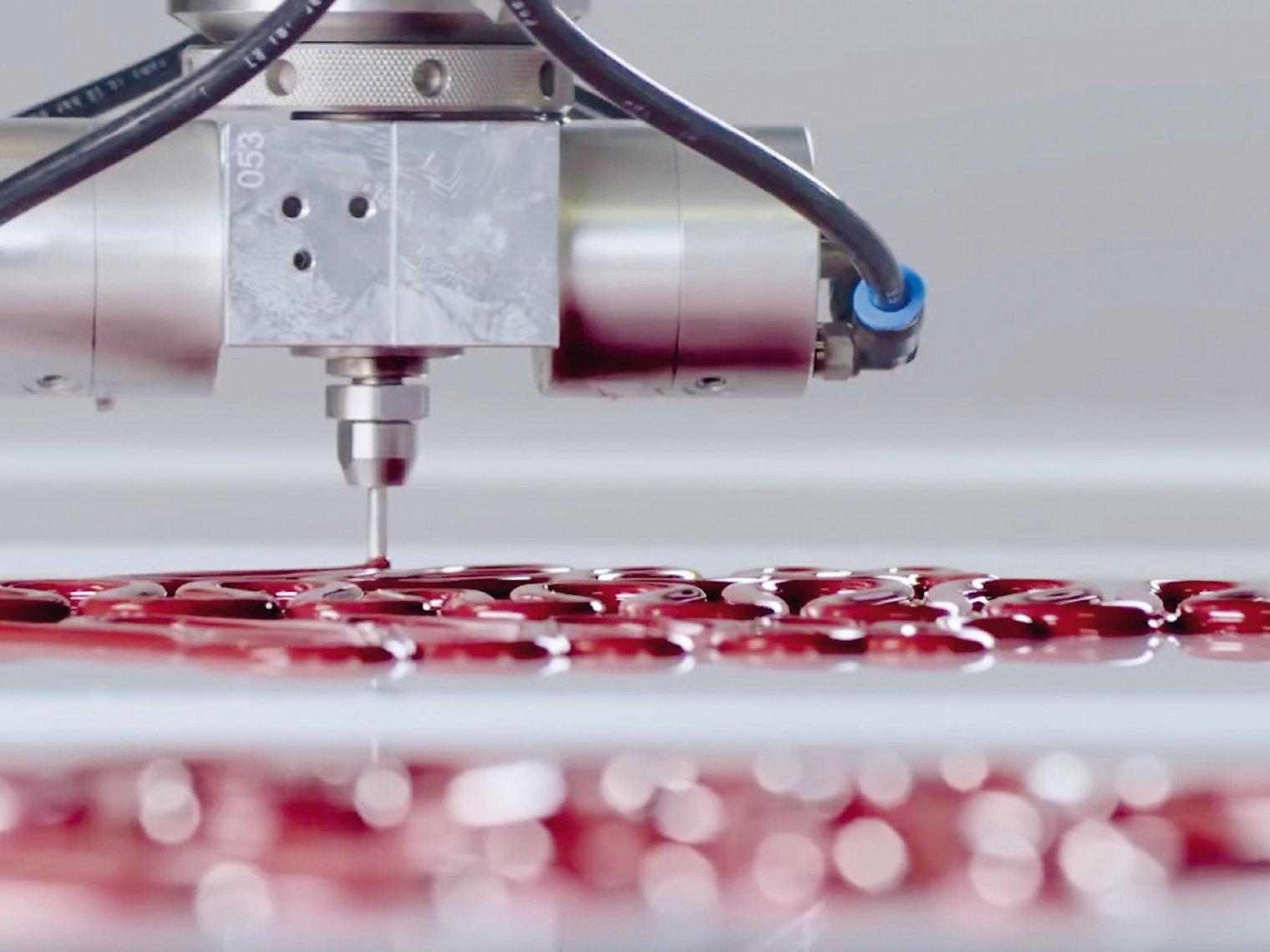
Revolutionizing the shoe industry with dispensing technology
Liquid Factory from Reebok is an innovation that could fundamentally change shoe production. The international sportswear giant has used innovative dispensing technology from RAMPF to produce a high-performance sports shoe from 3D drawings.
“Shoe production has hardly changed in the last 30 years. Manufacturers have to produce molds for every shoe, which is an expensive and time-consuming process,” explains Bill McInnis, the former NASA engineer who is now Vice President Future Team at Reebok, the global sports shoe and sportswear manufacturer.
However, a fundamental change is now potentially underway that is being driven forward by cutting-edge dispensing systems.
Liquid Factory – the benefits of dispensing technology
Reebok is now using “Liquid Factory” for shoe manufacturing. The “ingredients” are software, robots, dispensing technology, and a high-energy liquid material.
Isn’t there something missing? Exactly – no molds! They are not needed anymore, as the new technology works with 3D drawings. It uses liquid material and cutting-edge dispensing technology to precisely “draw” the components of the shoe in three-dimensional layers.
Using this technique, an energy-return outsole was produced that is far superior to a conventional rubber outsole. In addition, the Liquid Factory process creates a unique three-dimensional fit that envelops the foot from every direction. Finally, the Liquid Factory process, with the help of RAMPF dispensing technology, is used to produce the upper cushioning and traction elements of the shoe – which basically covers the entire product creation process.
Shaping the future with RAMPF dispensing technology
In the 1980s, company founder Rudolf Rampf put RAMPF at the forefront of a trend that would revolutionize an industry when he developed the first polyurethane board material for model engineering. Now, the company is in the same position again.
“Reebok approached us about providing the dispensing systems for producing the first 3D shoe, called ‘Liquid Speed’,” explains George Sollner, Head of Research & Development at RAMPF Group, Inc., RAMPF’s subsidiary in North America. “The first prototypes were produced at our headquarters in Wixom.”
The perfected processes of the RAMPF dispensing systems ensure reactive materials are applied rapidly in extremely precise patterns, enabling several layers and a real outsole to be produced using 3D printing. “Compared to other materials used in conventional 3D printing, this method is much faster and leads to better outsole characteristics,” explains Sollner.

